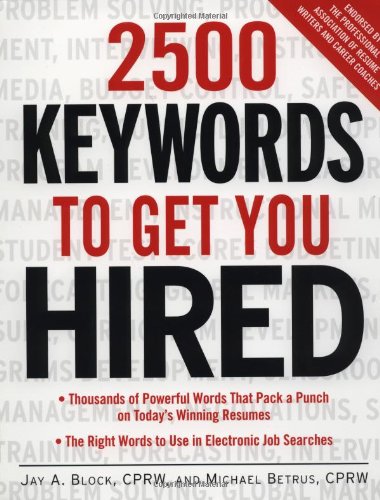Daniel Ralph, Paul Graham9780470861165, 0470861169
Table of contents :
Team DDU……Page 1
Contents……Page 8
About the Authors……Page 16
How This Book Is Organized……Page 18
Acknowledgements……Page 24
Part I Mobile Messaging Business Challenges……Page 26
1.1 Introduction……Page 28
1.2 What is multimedia messaging?……Page 29
1.2.1 Vodafone Live! service……Page 32
1.2.2 Services on offer……Page 35
1.2.3 J-Phone Sha-Mail service……Page 37
1.2.4 Openwave Multimedia Messaging Service Centre……Page 39
1.2.5 MMSC for carriers……Page 40
1.3.1 Device availability……Page 41
1.3.2 Convergence……Page 43
1.3.3 Toward third generation……Page 45
1.3.4 Support technologies……Page 47
1.3.4.1 Location information……Page 48
1.3.4.2 Personalization……Page 50
1.3.4.3 Mobile commerce……Page 53
1.3.4.4 Unstructured Supplementary Service Data……Page 54
1.4.1 Usability……Page 55
1.4.2 New usage scenarios……Page 57
1.4.3 New business models……Page 58
1.4.4 The interoperability challenge……Page 62
1.4.5 Security and privacy……Page 63
2.1 Introduction……Page 64
2.2 Infrastructure equipment vendors……Page 65
2.3 Content providers……Page 66
2.4 Mobile device manufacturers……Page 68
2.5 Mobile network operators……Page 70
2.5.1 Revenue share business models……Page 77
2.5.2 Sponsorship business models……Page 79
2.5.4 Digital Rights Management (DRM)……Page 81
2.6 Concluding remarks……Page 85
Part II The Technologies of Multimedia Messaging……Page 86
3.1 Introduction……Page 88
3.2 Overview of MMS specifications……Page 89
3.2.1 To receive a message……Page 90
3.2.2 To send a message……Page 91
3.4 What is an MMSC?……Page 93
3.5 Basic functionality of an MMSC……Page 95
3.6 MMS addressing models……Page 96
3.6.1.1 MMSNA……Page 97
3.6.1.2 MMS relay/server……Page 98
3.6.1.4 MMS user agent……Page 99
3.6.1.6 MMS reference architecture……Page 100
3.8 MM7: MMS relay/server – MMS VAS applications……Page 101
3.9 Example of MMS interaction with 2G/3G voicemailboxes……Page 103
3.10 Open Mobile Alliance – the WAP standard……Page 104
3.10.1 Architectural support for MMS……Page 105
3.11 MMS and WAP-PUSH……Page 106
3.12.4 User database-related items (MM6)……Page 108
3.12.7 End-to-end service items……Page 109
4.1 Introduction……Page 112
4.3 What is MIME?……Page 113
4.4 What is XHTML mobile profile?……Page 116
4.5 What is SOAP?……Page 117
4.6 Messaging terminals……Page 118
4.6.2 Nokia N-Gage……Page 120
4.6.3 Ericsson P800……Page 121
4.6.4.1 MM1: MMS relay/server and MMS user agent……Page 123
4.6.4.2 MMS user agent operations……Page 124
4.6.4.3 Device capability profile structure……Page 125
4.6.5 Terminal capability negotiation……Page 128
4.6.7 Provisioning……Page 129
4.7 Device provisioning……Page 130
4.8 Service provisioning……Page 131
4.9.1 Device presentation……Page 132
4.9.2 MMS and legacy handsets……Page 133
4.9.3 Dynamic MMS content adaptation……Page 134
4.9.4 Synchronized Multimedia Integration Language……Page 135
4.9.5 SMIL structure overview……Page 138
4.9.6 Application development……Page 140
4.9.7 Nokia MMS development environment overview……Page 141
4.10 Adobe GoLive content authoring……Page 142
4.11 Series 60 content authoring SDK for Symbian OS……Page 145
4.11.2 Sending and receiving an MM with the Series 60 MMS emulator……Page 146
4.12 Nokia MMS Java Libraries……Page 147
4.12.2 Ericsson MMS development environment overview……Page 148
4.13 Audio conversion……Page 149
4.14.1 The Nokia EAIF emulator……Page 151
4.14.1.1 External application……Page 152
4.14.2 Creating and compiling MMS message files……Page 154
4.14.3 Sending MMS notifications……Page 157
4.15.1 Content management……Page 158
4.15.2 Value Added Service Provider……Page 159
4.15.3 Technical specification of how VASP applications are delivered with MM7……Page 161
4.15.3.1 Submitting a VAS MM……Page 162
4.15.3.3 Cancel and replace of MM……Page 164
4.15.3.5 Generic error handling……Page 165
4.15.3.6 Distribution list adminstration……Page 166
4.15.3.8 SOAP message format and encoding principles……Page 168
4.15.3.9 Binding to HTTP……Page 169
4.15.3.11 Status reporting……Page 170
4.15.3.12 Request and error status codes……Page 171
4.15.4 Mapping information elements to SOAP elements……Page 174
4.15.4.1 MM7_submit.REQ mapping……Page 175
4.15.4.2 MM7_submit.RES mapping……Page 176
4.15.4.3 Sample message submission……Page 177
4.15.4.4 MM7_deliver.REQ mapping……Page 179
4.15.4.6 Sample deliver request and response……Page 180
4.15.6 Mobile video services……Page 182
4.15.8 Network support for video services……Page 183
4.15.9 Packet Streaming Service……Page 184
4.15.11 Video coding……Page 187
4.15.12 Open source video tools……Page 188
4.15.13 The challenge for mobile operators……Page 189
4.16 Concluding remarks……Page 190
5.1 Introduction……Page 192
5.2 MMS network elements……Page 193
5.2.1 MMS relay/server……Page 194
5.3 Persistent network-based storage……Page 195
5.3.3 External servers……Page 196
5.4.5 MM8: MMS relay/server–billing system……Page 197
5.5 WAP gateway……Page 198
5.6 Large-scale mail systems……Page 199
5.6.1 Persistent network-based storage……Page 201
5.6.2 Multimedia Message Box (MMBox)……Page 202
5.6.3.2 Abnormal operation……Page 203
5.6.3.3 Features……Page 204
5.6.3.5 Information elements in the MM1_mmbox_store.RES……Page 205
5.6.3.8 Abnormal operations……Page 206
5.6.3.9 Features……Page 207
5.6.3.11 Information elements in the MM1_mmbox_view.RES……Page 209
5.6.3.12 Service records for a MMS relay/server that supports MMBoxes……Page 210
5.9 Mobile data billing systems and the MM8 interface……Page 213
5.9.1 Charging information……Page 215
5.9.1.1 Charging scenarios……Page 217
5.9.1.3 MMS records for originator MMS relay/server……Page 218
5.9.1.4 MMS records for recipient MMS relay/server……Page 228
5.9.1.5 Prepaid subscribers……Page 231
5.10.1 Introduction to Open Service Access……Page 233
5.10.2 Overview of Open Service Access……Page 235
5.10.3 Basic mechanisms in the Open Service Access……Page 238
5.10.4.1 End-user authorization to applications……Page 240
5.10.4.3 End-user privacy……Page 241
5.10.6 Charging SCF……Page 242
5.10.7.1 Reservation/Payment in parts……Page 243
5.10.7.2 Immediate charge……Page 245
5.10.8 Inband MMS detection for charging……Page 247
5.10.9 Fraud……Page 248
5.10.10 Sample charging scenario……Page 249
5.10.12 Advice of charge……Page 250
5.10.14 Support for reply-charging in MMS……Page 251
5.11 Internetwork interoperability using the MM4 interface……Page 255
5.11.1 The MM4 interface……Page 256
5.11.2 Resolving the recipient’s MMSE IP address……Page 257
5.11.3.1 DNS-ENUM recipient MS-ISDN address resolution……Page 258
5.11.3.2 Recipient MS-ISDN address resolution based on IMSI……Page 261
5.11.4 The importance of interoperability……Page 262
5.11.4.2 Commercial obstacles……Page 263
5.12 Open source components for building an MMSC……Page 264
5.13 Network capacity and application limitations……Page 267
5.14 Concluding remarks……Page 268
Part III Multimedia Messaging Services Today and Tomorrow……Page 270
6.1.1 Orange in the UK……Page 272
6.1.3 O2 in the UK……Page 273
6.1.4 M1 of Singapore……Page 274
6.1.5 Tecnomen and France Telecom Dominicana in the Dominican Republic……Page 275
6.1.7 ITN in the UK – an example of a Value Added Service Provider (VASP)……Page 276
6.1.8 Hutchinson Whampoa’s UK 3G service……Page 277
6.1.9 Australian mobile operators……Page 278
6.1.10 MMS roaming between Singapore, Australia and the Philippines……Page 279
6.1.11 MMS in Sweden……Page 280
6.1.13 Cellcom in Israel……Page 281
6.1.14 Sonofon in Denmark……Page 282
6.1.16 StarHub Singapore……Page 283
6.1.18 Orange in Switzerland……Page 284
6.1.20 MMS used to enhance interactive TV……Page 285
6.4 Mobile marketing……Page 286
6.4.2 Short-term opportunity: target MMS-curious consumers on the Web……Page 287
6.5 Mobile information services……Page 288
6.6.1 Interactive ”pick-a-path” video……Page 291
6.6.3 Collectable cards……Page 292
6.6.7 Horoscopes……Page 293
6.6.9 MMS and the young person market……Page 294
6.7.1 MMS law enforcement……Page 295
6.8 Concluding remarks……Page 296
7.1 Introduction……Page 298
7.2 Mobile messaging evolution and migration……Page 299
7.2.1 Types of multimedia messaging……Page 301
7.2.2 Market barriers……Page 302
7.3 Instant Messaging Service……Page 304
7.4 MExE……Page 306
7.4.2 MExE classmark 2 (Personal Java environment)……Page 308
7.4.4 MExE classmark 4 (CLI Compact Profile environment)……Page 309
7.5 Java 2 Micro Edition……Page 310
7.5.1 Personal Java and Embedded Java……Page 311
7.7 Digital Rights Management……Page 312
7.7.1 Differentiate content and control levels……Page 313
7.8.1 Mobile payment options……Page 314
7.9 Web services……Page 315
7.10 3GPP Personal Service Environment (PSE)……Page 316
7.10.2 Liberty Alliance……Page 317
7.10.3 Microsoft Passport……Page 318
7.11 Improved billing mechanisms……Page 319
7.12 Location-based services……Page 320
7.13 Multimedia Broadcast/Multicast Service……Page 321
7.13.2 MBMS data sources……Page 323
7.14 Concluding remarks……Page 325
Table of Infrastructure, Content and Software Vendors……Page 326
Glossary……Page 342
Standards and Specifications……Page 368
Websites……Page 370
Industrial Fora, Regulatory Organizations and Other Relevant Initiatives……Page 372
References……Page 374
Index……Page 378







Reviews
There are no reviews yet.